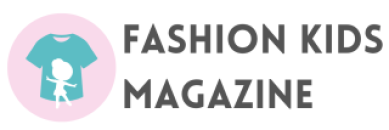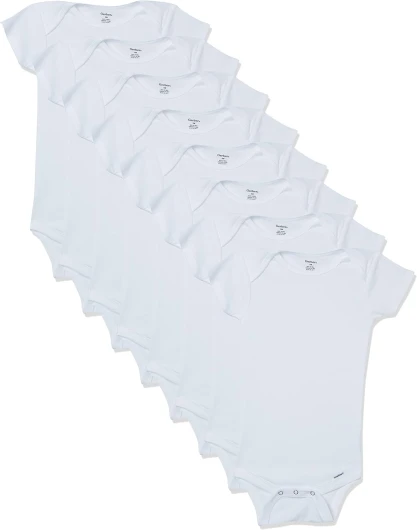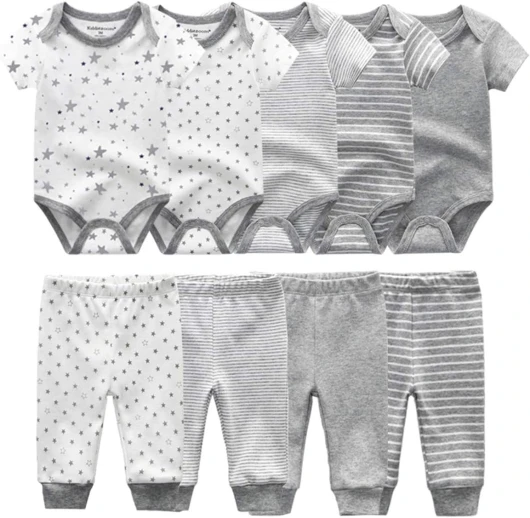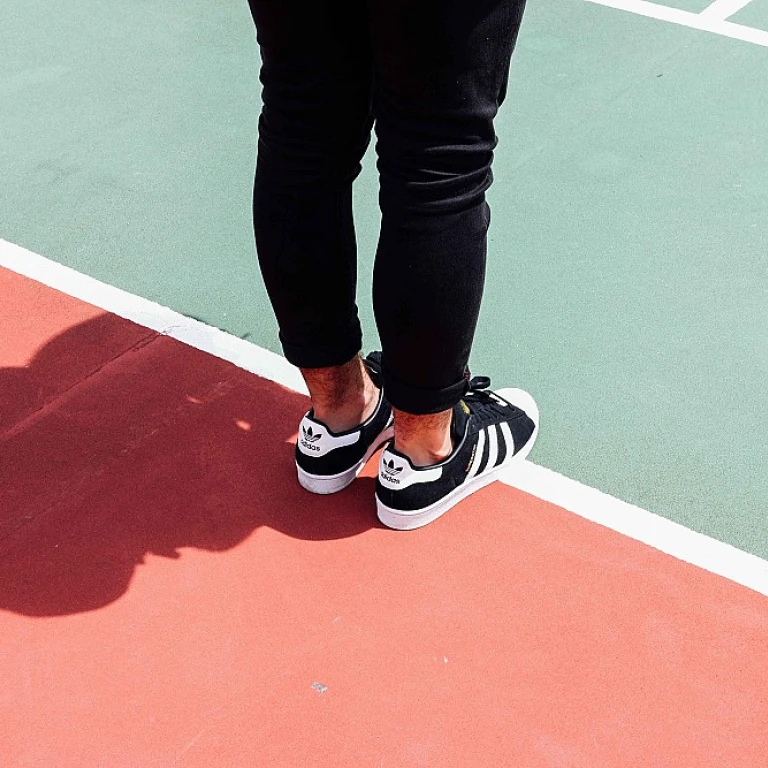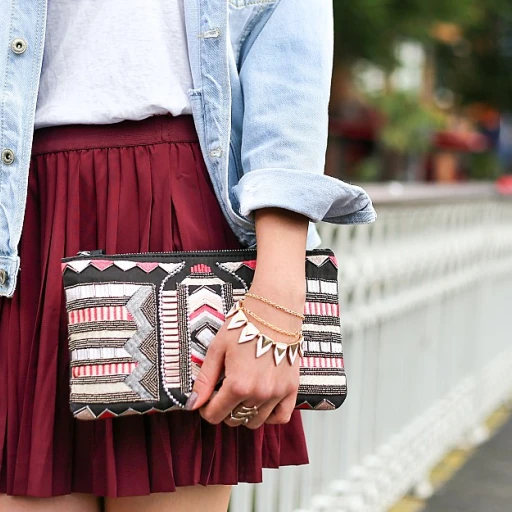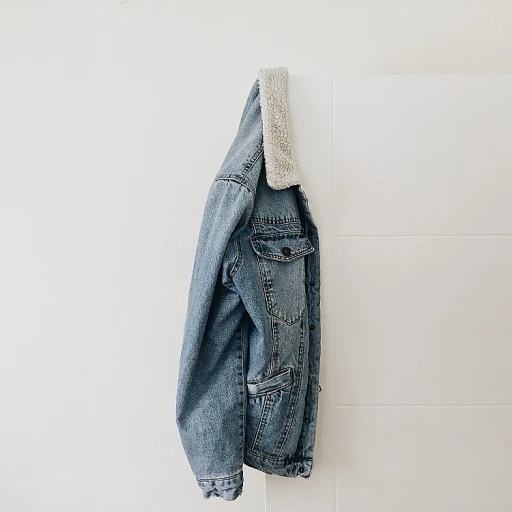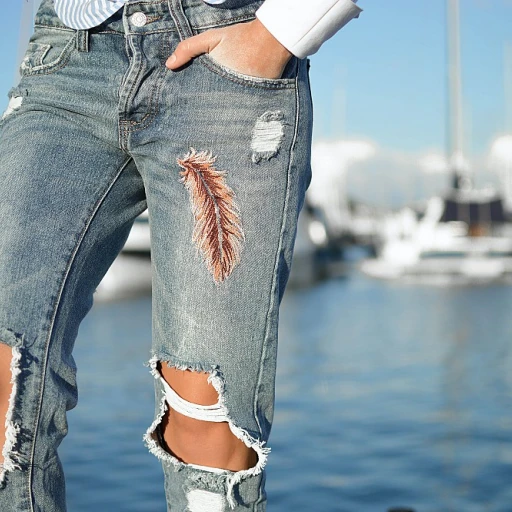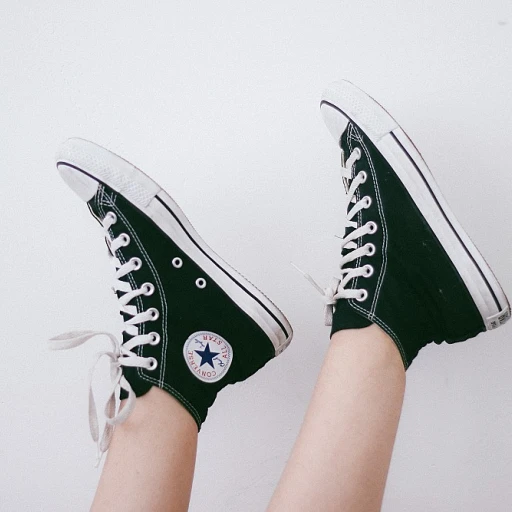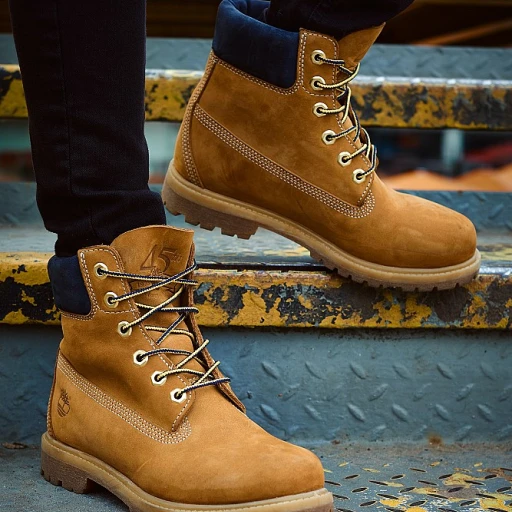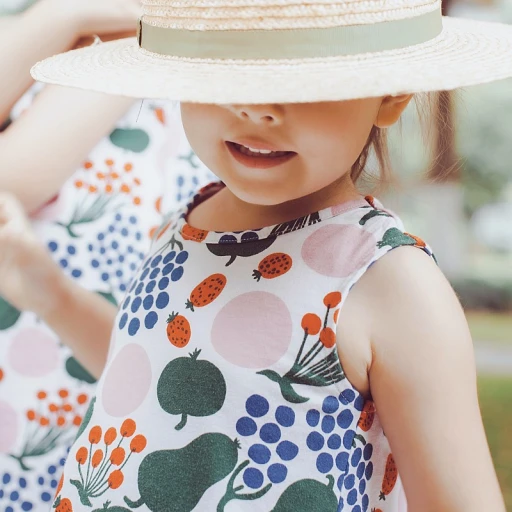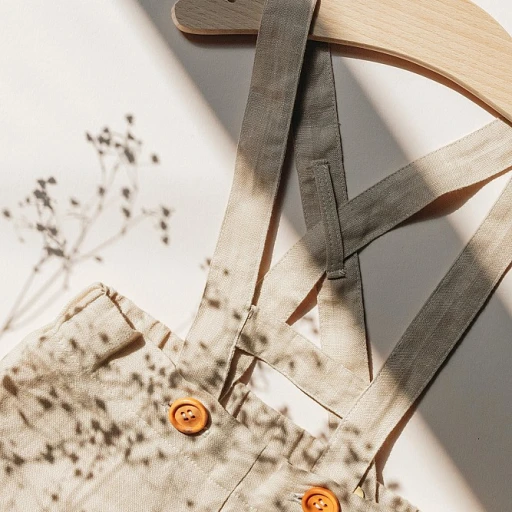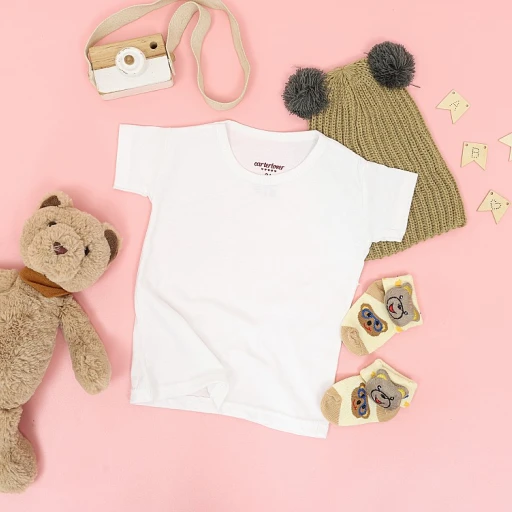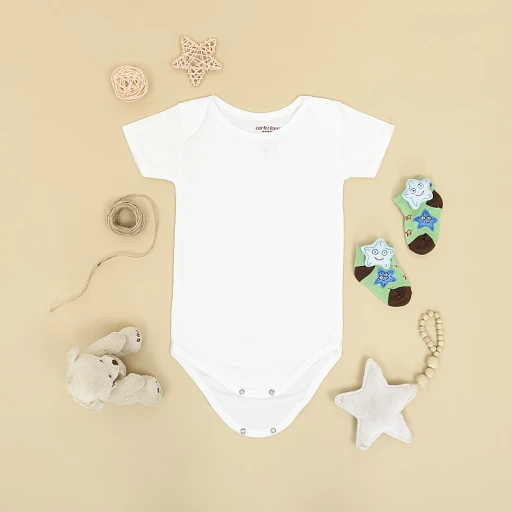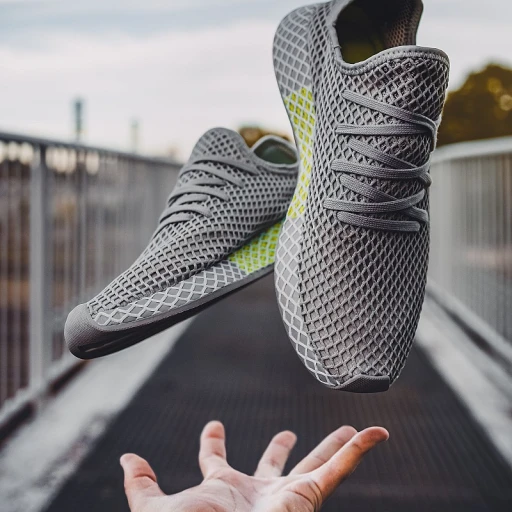
Understanding size 74 in baby clothes
Decoding the mystery behind size 74
If you’ve ever felt baffled by baby clothing sizes, believe me, you are not alone. Here’s where we step in to unravel the enigma of size 74 in baby clothes, answering the question every parent has asked: what size is 74 in baby clothes? This size primarily references European sizing, which at times feels like decoding an ancient map of babywear dimensions.
The numbers game
European sizes for babies can be a bit puzzling primarily because they often denote a baby's length in centimeters. So, when you see 'size 74', it’s speaking to the fact that this size is intended to fit a baby approximately 74 centimeters in length. Convert that over for those of us entrenched in pounds and inches? That’s around 29 inches. Interestingly enough, this figure is pretty close to the size a child would need at around 6 to 9 months of age, depending on the brand and baby’s growth rate.
Why the confusion?
The main issue here is the inconsistency between sizes from various baby clothes manufacturers. One brand’s 74 could fit like another brand’s 70. It’s an infuriating guessing game many parents play. The trick is to rely less on labels and more on the actual measurements - chest, waist, hip, and length.
Measurements and comparisons
Typically, for a size 74 in baby clothes, you look at a chest size of about 46 centimeters, a waist size of around 45 centimeters, and 47 centimeters for hips. Still with me? Okay, let’s delve deeper into the specifics with precise body measurements:
- Chest size: 46 cm
- Waist size: 45 cm
- Hip size: 47 cm
- Length: 74 cm (obviously!)
Clothing sizes for children are already a minefield, but baby sizes seem to be on a whole different level of puzzlement.
Size conversions: European to US and UK sizes
Size conversions: european to US and UK sizes
It's easy to get confused when trying to decipher baby clothing sizes, especially when different regions have their own sizing standards. Size 74 in baby clothes is common in Europe, but how does it compare to US and UK sizes? Well, let's break it down.
Understanding european sizes
European sizes, like size 74, are typically based on the baby's height in centimeters. This means that size 74 is meant for babies who are around 74 cm tall. This system can be a bit easier to use because it directly correlates to the baby's length, giving a clear idea of the fit.
US size equivalents
In the United States, baby clothes are often labeled by age. According to many brand size charts, size 74 in European baby clothing generally translates to 9-12 months in US sizes. This can vary slightly between brands, so it's always a good idea to look at the specific size chart of the brand you're purchasing from.
UK size equivalents
In the UK, baby clothing sizes are also typically labeled by age. Converting size 74 to UK sizes usually also means roughly 9-12 months. However, just as in the US, these sizes can slightly differ between brands, so checking the brand's specific size chart is key.
International size charts and conversions
For a more in-depth understanding, you might want to refer to an international baby clothes size guide. These guides often include comparisons among various countries, which can be especially useful for parents who are shopping for imported clothes or brands not common in their country.
Remember, always approach size conversions with caution. Kids grow at different rates and having a precise measurement of your baby's height and chest size will help ensure a more accurate fit. For more tips on understanding baby clothes sizing, check out our comprehensive baby clothes sizing guide.
Measurements for size 74: chest, waist, hip, and length
Chest and waist measurements for baby size 74
When figuring out what size 74 in baby clothes truly means, knowing the chest and waist measurements is essential. The chest size for this size typically spans around 48-50 cm, while the waist measures about 47-49 cm. These dimensions can vary slightly depending on the brand, but they provide a reliable baseline for parents searching for the perfect fit.
Length and hip size for babies wearing size 74
The length of a baby who fits into size 74 ranges from 70-74 cm. Hip sizes are less frequently provided but are generally close to the waist measurements, around 47-50 cm. This gives a broader understanding of how these clothes will fit the baby's body. It’s vital to ensure that the length accommodates your baby's growth spurts while the hip area provides enough room for movement.
Head circumference for size 74 baby clothes
Head circumference isn't always listed on clothing size charts, but it's useful to know, especially for hats and hooded clothes. For size 74, this measurement is around 44-46 cm. Ensuring your baby's head circumference aligns with the clothing size can help in selecting hats or hoodies that comfortably fit without being too tight or too loose.
Foot length and its importance in size 74
Foot length is another crucial measurement, especially when buying footwear or footed pajamas. For size 74, babies' foot length is generally around 12-13 cm. Getting this right avoids tightness or discomfort and ensures that your baby can wiggle their toes freely.
By understanding these specific measurements, you're better equipped to make informed decisions about baby clothing. If you’re still curious about other sizes, check out our guide on size 86 in baby clothes as well.
Age range and weight for size 74
What weight range does size 74 fit?
Alright, so you're looking at size 74 in baby clothes and scratching your head to figure out the details. Well, when we talk about size 74, we're generally looking at babies around the age of 6 to 9 months. Of course, kids grow at different rates, so it's not a one-size-fits-all kind of thing.
According to NHS, the average weight for a baby around this age is approximately 17 to 20 lbs (7.7 to 9.1 kg). Keep in mind that this varies quite a bit from baby to baby. If your kiddo is a little ahead or behind this weight range, size 74 might still be a comfortable fit depending on their growth patterns.
Does height matter?
Yes, it does! Clothing sizes often factor in not just weight but also length. For size 74, you're looking at babies approximately 68 to 74 cm in height. To give you an idea, that's the upper end of what most European size charts consider a suitable length for 6 to 9-month-old babies.
Every baby is unique, but a good baby size chart can be a real lifesaver here. Measure your baby’s height and girth just to be sure you’re getting the right fit!
Practical Examples from Parents
Consider Emma Johnson from New York, who had issues with clothes for her 8-month-old daughter. She found that size 74 fits snugly at 19 lbs and 70 cm in height. Similarly, Noah Anderson in London reports his son, who weighed 18 lbs and measured 72 cm, wore size 74 comfortably. These practical examples can be super helpful when checking sizings!
Remember, the age and weight range provided are just guidelines. It's always best to measure your baby’s actual body length, chest, waist, and hips to ensure the garment will fit well. And always check the brand's size chart. Happy shopping!
Popular brands and their size charts
Popular brands' baby clothes size comparisons
When we're talking about baby clothes, it's no secret that sizes can vary between brands, making things extra tricky for parents. For instance, when you're lookin' at size 74 in baby clothes, this is typically meant for little ones who are around 9 to 12 months old. But let's face it, one brand's size 74 can be another brand's size 80! So, here's a quick rundown of some popular baby clothing brands and their sizing charts to help you figure it out.Carter's
Carter's is a go-to for many parents in the United States. Their size 9 months usually correlates with a baby length of 28 to 29.5 inches and a weight of 17.5 to 21 lbs. But keep in mind, Carter's tends to run a bit small, so always check the size chart before you buy.H&M
H&M, a popular brand from Europe, sizes their baby clothes by centimeters. So, size 74 meant for a baby 6 to 9 months old who is around 74 cm tall. H&M's clothing tends to fit true to the actual size, making it easier for parents to choose without second-guessing.Gap
For those inclined towards Gap baby clothing, size 6 to 12 months is usually meant for babies weighing between 16 and 20 lbs and measuring 26.5 to 28.5 inches in length. Gap is known for a more relaxed fit, making their baby clothes super comfortable.Zara
Zara, another European brand, sticks with the centimeter measurement, so their size 74 is similar to H&M's, meant for 6 to 9-month-old babies. Generally, Zara's baby clothes are designed to be more fitted and stylish.Old Navy
Old Navy, often grouped with Gap due to similarities in style, sizes their 6 to 12 months range for babies between 17 to 22 lbs and lengths ranging from 27 to 29 inches. Just like Gap, Old Navy's baby clothing is known for being comfy and having a bit of stretch. Understand these conversions and measurements can make shopping way easier. Personally, my little one lived in H&M and Zara for their true-to-size fits, though it’s always a good idea to refer to specific size charts for each brand to avoid any surprises. Every baby is different, and it’s all about what’s comfy and works best for your child.Tips for choosing the right size for your baby
Consider fabric and care instructions
When picking out baby clothes, it’s essential to think about the fabric and how easy it is to care for. Cotton is a popular choice because it’s soft, breathable, and gentle on a baby’s skin. According to the American Academy of Pediatrics, cotton is highly recommended to avoid skin irritation or allergies in infants. Also, always check the label for washing instructions. Some fabrics require specific care, such as hand washing or air drying, which might not be practical for everyday wear.
Think about ease of changing
Babies can be notoriously messy, and frequent outfit changes are often necessary. Clothes with snaps, zippers, or stretchy necks make it easier to slip them on and off. Outfits that open at the bottom are handy for quick diaper changes. The American Academy of Pediatrics suggests looking for onesies and pajamas with front fastenings to make these changes more manageable.
Seasonal considerations
It’s important to match the outfit to the season. Babies can't regulate their body temperature as effectively as adults. Therefore, dressing them in layers during cooler months and choosing light, breathable fabrics in the summer is crucial. The best place to buy baby clothes often has seasonal collections that can guide your choices.
Allow room for growth
Babies grow quickly, so buying clothes slightly larger than their current size ensures that they can wear them for a bit longer. Look for adjustable features like rolling cuffs or elastic waists. According to the Kids Fashion Magazine, parents should expect to replenish their baby’s wardrobe every three to six months.Baby girl clothes cheap have a good selection of adjustable and extendable baby clothes that cater to growing infants.
Consider eco-friendly options
Many parents are now opting for eco-friendly baby clothing. Brands like Burt's Bees Baby and Hanna Andersson offer sustainable baby clothes made from organic materials and adhere to ethical production practices. The Environmental Working Group (EWG) also supports organic cotton due to reduced exposure to pesticides and harmful chemicals, which is safer for your little one’s delicate skin.
Common issues with baby clothing sizes
Too many confusing size charts
One of the biggest issues parents face with baby clothing sizes is the sheer number of different size charts. European sizes like size 74 can be a headache to convert accurately into US or UK sizes. To put it simply, you are not alone if you find it confusing. The disparity is mostly due to differences in measurement standards. For example, size 74 in European sizes translates roughly to 9-12 months in the US. Unfortunately, this simple conversion isn't always straightforward because each brand may interpret these sizes differently.
Even within countries, different brands can use entirely different charts. A study by the National Institute of Metrology found that up to 45% of baby clothes in the US do not match the sizes claimed on the tags, leading to sizing discrepancies and dissatisfaction among parents. This misalignment can make online shopping particularly tricky, with clothes often arriving too small or too large for the intended age group.
Standardizing global sizes
One solution floated by experts like Dr. Samantha Oliver from the Children's Wear Research Institute is the standardization of global sizes. If brands opted for a universal sizing method, it would simplify the process substantially for parents. Dr. Oliver explains, “A universal sizing chart could significantly alleviate the frustrations that parents around the world face when purchasing baby clothes. It would help ensure a more consistent fit regardless of the brand or country of origin.”
Ambiguity with textiles and fits
Another factor that adds to the confusion is the type of textile and fit. For instance, a baby romper made of stretchable material like spandex may fit a baby longer compared to a cotton outfit of the same size. This textile ambiguity often leaves parents questioning what size will really fit their baby comfortably. Moreover, brands may also have their unique fit styles—some may focus on loose comfort while others go for a snug, body-hugging fit.
According to a survey by the Child Clothing Association, around 37% of parents reported opting for a size larger than recommended as a precaution. This clearly shows a gap in reliable sizing that brands need to address. Until brands start adopting more uniform size charts and considering textile differences more explicitly, the ambiguity will likely remain a painful issue for many parents.
Misleading labels
Lastly, let’s talk about misleading labels. Labels that proclaim a “one size fits all” are essentially meaningless and add to the confusion. Terms like “Newborn,” “Infant,” or “Toddler” can also be subjective and vary widely across different brands. A brand might consider Size 74 suitable for a 6-month-old whereas another brand might label it for a 12-month-old. To avoid this, parents are often advised to measure their baby's height, weight, chest, waist, and hip sizes and compare these measurements explicitly with the brand’s size chart rather than relying on age-based labels.
Expert insights and recommendations
What the pros have to say about baby sizes
It’s not just parents who find sizing baby clothes tricky. Pediatricians and children’s fashion specialists often chime in on the subject, offering advice and insights to make the process smoother. Dr. Jane Morrison, a well-known pediatrician, emphasizes the importance of regular measurement checks. 'Babies grow at incredible rates. It's critical for parents to regularly measure their baby's height, weight, and even head circumference to ensure the right fit,' she says.
When choosing baby clothes, it's helpful to consider expert recommendations. For example, clothing brand representatives often provide useful guidelines. The team from the popular brand Carter’s suggests, 'Always go one size up if you're unsure. Babies grow faster than you think, and a slightly larger size allows more comfortable movement.'
Another common issue that experts address is the difference in size charts across brands and countries. Kayla Thompson, a children’s clothing designer, warns, 'The sizes can vary drastically. A size 74 in Europe might fit differently than in the US. Always check the specific brand’s size chart before making a purchase.'
Moreover, clothing size battles don’t just stop at measurements; they often include fabric type. Certain materials offer more stretch and room for growth, making them more suitable for rapidly growing children. According to John Evans, a baby clothing manufacturer, 'Natural fibers like cotton with elastane are less likely to cause irritation and can accommodate your baby's growth better.'
Finally, it's crucial to account for practical factors such as shrinking after washing. Many parents trust brands that offer pre-shrunk garments to prevent this issue. Real-life examples highlight this problem: Ana, a mother of two, shares that she prefers brands like Baby Gap because their clothes consistently fit her children after several washes.
The takeaway? Always keep an open mind and listen to advice from those who know best. Expert insights can save time, money, and most importantly, keep your baby comfy and happy in well-fitting clothes.
